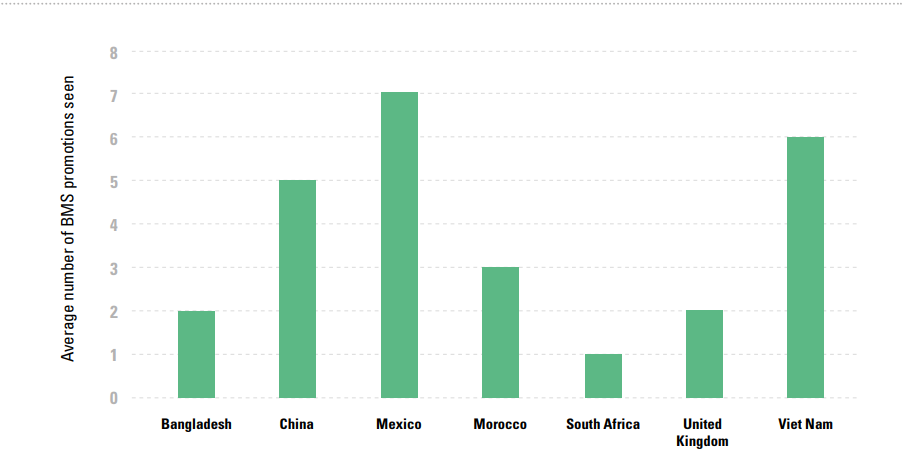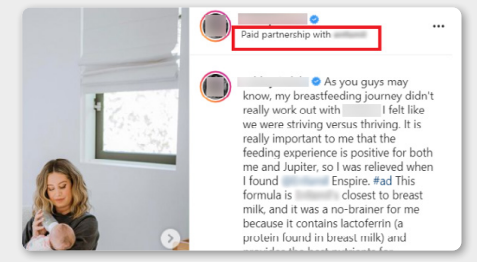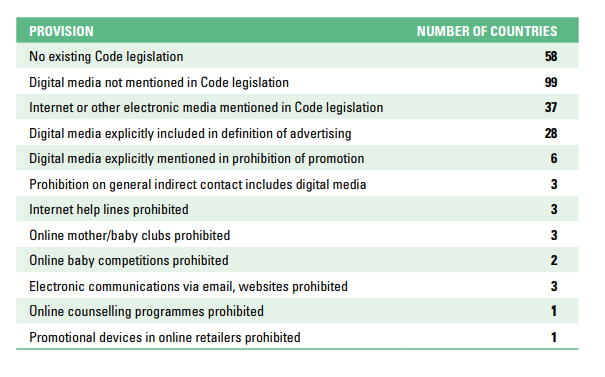Digital Media promotion of Breast Milk Substitutes and its impact on Breastfeeding practices
Increased use of Digital Media Marketing on Breastmilk Substitutes

Background
According to the World Health Organization estimates, Currently 3 in 5 infants are not breastfed in the first hour of their birth. Over 8 lac children (0–2 years) could be saved if they are optimally breastfed. Globally only 44% of infants under the age of 6 months are breastfed exclusively and 56% of children stop breastfeeding before reaching the age of 2 years.
According to the World Health Assembly (2012), the aim is to increase the percentage of breastfed infants under the age of 6 months to 50% by 2050 (more along with complementary food after the age of two). In India, according to the latest round of National Family Health Survey, 2019- 2021, percentage of children under 6 months who exclusively breastfed were 63.7 (rural 65.1% and urban 59.6%) as compared to NFHS-4 percentage of 54.9. Although the rate of exclusive breastfeeding in India is higher than many developed countries, it still stands among the lowest when compared with other South Asian Countries. There has been scarcity of research when it comes to the effect of urbanization on breastfeeding practices, fertility, and lactation.
There are many reasons for such low rates of breast feeding practices such as issues with lactation and latching, concerns about infant nutrition and weight, mother’s concern about taking medications while breastfeeding, unsupportive work policies and lack of parental leave and cultural norms and lack of family support. This results in increased child deaths, diseases and cognitive deficits. Further, breastfeeding is being endangered by the increased use of breast milk substitutes.
Breast Milk Substitutes (BMS)
Any type of food or drink given to an infant before six months is a breast milk substitute. There are studies which suggests that in unhygienic conditions BMS may carry a higher rate of infection and can be fatal for infants. Four decades have passed since there was a move to eliminate the promotion of breast milk substitutes by many organizations. The World Health Assembly has expressed the idea of not promoting BMS among the general public. However, only recently (WHA 73.26), it was found that it is important to curb digital media promotions for BMS. Since the global formula market is valued at US$ 52 billion, digital media plays an important role in spreading its word among the general public. Further, the amount spent on the promotion of breastfeeding practices is far too low than what is spent on advertising BMS products in the market.
Digital Media and Marketing for BMS
The recent report entitled, “Scope and Impact of Digital Marketing Strategies for promoting breastmilk substitutes” has discussed the use of digital media strategies like role, techniques, extent, impact and enforcement of codes in lieu of breastfeeding practices. This report is based on systematic literature review, interviews and surveys.
Digital marketing has become an important, cost effective & powerful tool in marketing. In 2019, 50% of total media advertising was spent on digital media marketing. This has also led to shaping the behaviour and decision of customers and it is quite pervasive in the case of BMS. For example, in Vietnam and Indonesia, the most frequent sources of advertising BMS was Facebook. In short, Digital media (including Facebook, twitter, YouTube, Instagram) was the top three sources of exposure to BMS in many countries except South Africa.

Between January and June 2021, almost one in five (19.3%)posts in digital media has originated from BMS manufacturer account. Further, half of the posts containing a reference to BMS brand has appeared on social media platform.
Techniques to promote BMS on Digital Media
There is an increased use of new applications operating on real time data, AI and ML, mining of internet user data and providing financial rewards to promote the products to their peers. These techniques then drive users to take necessary actions. There are also virtual support groups like mother clubs, baby clubs wherein BMS companies invest in providing promotional content in the form of comments, stories, photographs and videos. This helps to grow the conversation among peers and friends with the help of similar experiences, expertise and shared values, etc. Thus customers can be engaged using a variety of techniques such as creative & entertainment activities, communication strategy, influencer strategy, etc.

Curbing the use of Digital Media on BMS
According to article 5.1 of the International Code of Marketing of Breast Milk Substitute, there should be no advertisment or promotion of BMS to the general public. However, only 37 of 194 countries (19%) clearly prohibit the promotion of BMS on internet, digital channels or any other electronic platform.

It is very important that existing legal measures for implementing the codes to update themselves to protect mothers and infants. BMS promoters through the use of digital marketing uses enormous data sets to reach potential consumers and shape their behaviours. This impact may lead to increased online interactions among women on their deepest concerns which could exploit their personal moments.





